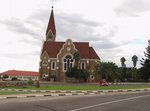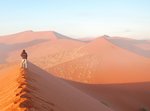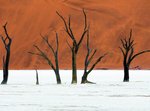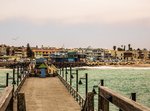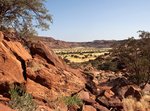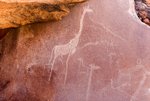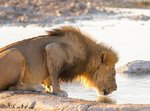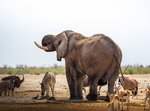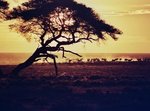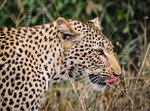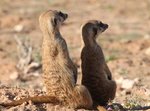Day 1
After your arrival at the Windhoek International Airport, you will start you Namibia Tour by driving to Windhoek. Spend the day at leisure – you might want to go on a city tour.
Windhoek is the capital and largest city of the Republic of Namibia. Notable landmarks are: Parliament Gardens, Christ Church and the Tintenpalast.
Day 2
The journey leads you to the fascinating dunes in the Sossusvlei area. Enjoy a scenic drive via the Spreetshoogde Pass to Solitaire.
Spreetshoogde Pass is a mountain pass in central Namibia, connecting the Namib Desert with the Khomas Highland by traversing the Great Escarpment, a geological feature of much of the southern part of the African continent. The top of the pass features a rest place from which there is a spectacular view into the adjacent Namib.
Now still continue towards south till you reach the lodge.
Day 3
Just before sunrise, you start off to the famous dunes of Sossusvlei. Experience the colour change of the dunes as the bountiful sunshine passes over them.
The sand dunes of Sossusvlei in the Namib Desert are thought to be the highest dunes in the world. The best time to view Sossusvlei is close to sunrise and sunset, when colours and shades change constantly, offering a photographer’s dream.
Again, you will be able to explore the area on a further activity offered by the lodge.
Day 4
Enjoy your breakfast-with-a-view, before you depart through the rough Namib Desert till you arrive in the coastal town of Swakopmund.
The Namib Desert, the world's oldest desert (43 million years), covers just under 50 000km² and incorporates the Namib Naukluft Park, a section of the diamond area to the south and the Skeleton Coast to the north, which was recently proclaimed as the Dorop Park.
Day 5
On this morning, you have the opportunity to drive to Walvis Bay for a dolphin cruise in the lagoon. Whilst learning a lot about the marine life of the Atlantic Ocean, you can enjoy some fresh oysters and champagne on board.
Swakopmundwas founded in 1892 as the main harbour for German South-West Africa, and a sizable part of its population is still German-speaking today. Boats were offloaded at Swakopmund’s landmark, the jetty.
Day 6
Once again, you will drive in a northerly direction via Henties Bay and Uis, through the Damaraland, till you reach our next destination near Twyfelfontein.
Damaraland is one of the most scenic areas in Namibia, a huge, untamed, ruggedly beautiful region that offers the more traveller a more adventurous challenge. Towards the west, the geography changes dramatically with endless sandy wastes, that incredibly are able to sustain small, but wide-ranging, populations of desert-adapted elephant, black rhino, giraffe, ostrich and springbok.
Day 7
It’s time to explore one of the World Heritage Sites, Namibia has to offer – Twyfelfontein. You will be going on a guided tour to explore the rock engravings and afterwards try to find the Desert Elephants.
Twyfelfontein (meaning in Afrikaans: uncertain spring), officially known as ?Ui-?Ais (meaning in Damara/Nama: jumping waterhole), is a site of ancient rock engravings in the Kunene Region of north-western Namibia.
Day 8
On your way to the Etosha National Park, you may want to visit the Petrified Forest. Your journey then continues via Khorixas and Outjo to the lodge, just south of the Anderson Gate.
The Petrified forest located some 40 kilometres west of the Namibian town of Khorixas, on the C39 road, is a deposit of large tree trunks that have "turned to stone" through a process of diagenesis.
Day 9
You have a full day, that you can use to explore the abundant wildlife, Namibia has to offer.
Etosha National Park offers excellent game viewing in one of Africa’s most accessible venues. Zebra and springbok are scattered across the endless horizon, while the many waterholes attract endangered black rhinoceros, lion, elephant and large numbers of antelope.
Day 10
On today’s itinerary, you have a guided game drive in an open game drive vehicle from the lodge. You might be lucky to view a herd of elephants splashing around at a water hole.
Elephants are the largest living land animals on Earth today. They typically live for 50 to 70 years, but the oldest recorded elephant lived for 82 years. The male elephant weighs about 10,900 kg with a shoulder height of 3.96 meters. Elephants suck water up 14 litres of water into the trunk and then blow it into their mouths.
Day 11
You will have to say good bye to the Fort and drive via Tsumeb and Otjiwarongo to the lodge, that host the AfriCat Foundation.
Tsumeb is the largest town in Oshikoto region in northern Namibia. Tsumeb is the "gateway to the north" of Namibia. The town is the site of a deep mine, that in its heyday was known simply as "The Tsumeb Mine" but has since been renamed the Ongopolo mine.
Day 12
In the morning, as well as in the afternoon, you will go on exiting private game drives. You will be searching for cheetahs and leopards.
The private Okonjima Nature Reserve is nestled in over 200 square kilometres amongst the imposing Omboroko Mountains, boasts some of the most exceptional accommodation in Namibia, but the unequivocal highlights are the cheetah and leopard safaris.
Day 13
After another morning activity and a good breakfast, you depart towards Okahandja and Windhoek, till you reach the Windhoek International Airport.
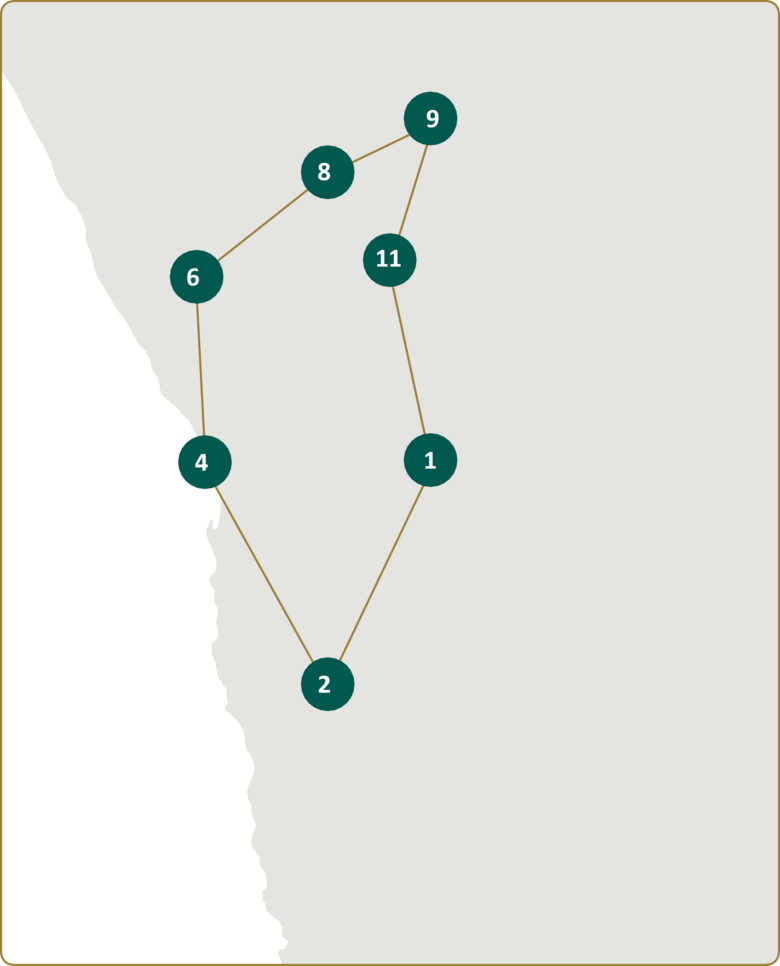
- 1. Hotel Heinitzburg
- 2. Sossusvlei Desert Lodge
- 4. The Stiltz
- 6. Mowani Mountain Camp
- 8. Ongava Lodge
- 9. Onguma The Fort
- 11. Okonjima Bush Suite

